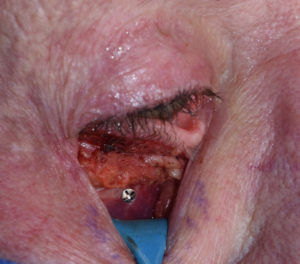The tear trough deformity has become well recognized today and is a natural consequence of the attachments of the lower eyelids and infraorbital rim bone. Originally called the nasojugal fold, it is a sulcus that runs downward and outward from the inner corner of the eye. It is formed by the fascial attachments to the periosteum at the orbital rim between that of the orbicularus oculi and upper lip muscles. This creates a hollow area under the eye that often appears as a dark circle.
Tear troughs become magnified with age and particulalry with poor underlying skeletal support. Recessed orbital rim bone makes tear troughs look deeper and allows lower orbital fat to appear as if it is prolapsed or herniated.
The most popular treatments for tear troughs are injectable fillers and, as an isolated procedure, can be very effective. Surgical treatments for tears trough come into play usually because a lower blepharoplasty procedure is being done for an overall periorbital improveent.These include a variety of fat grafting techniques as well as implants.

Dr. Barry Eppley
Indianapolis, Indiana


